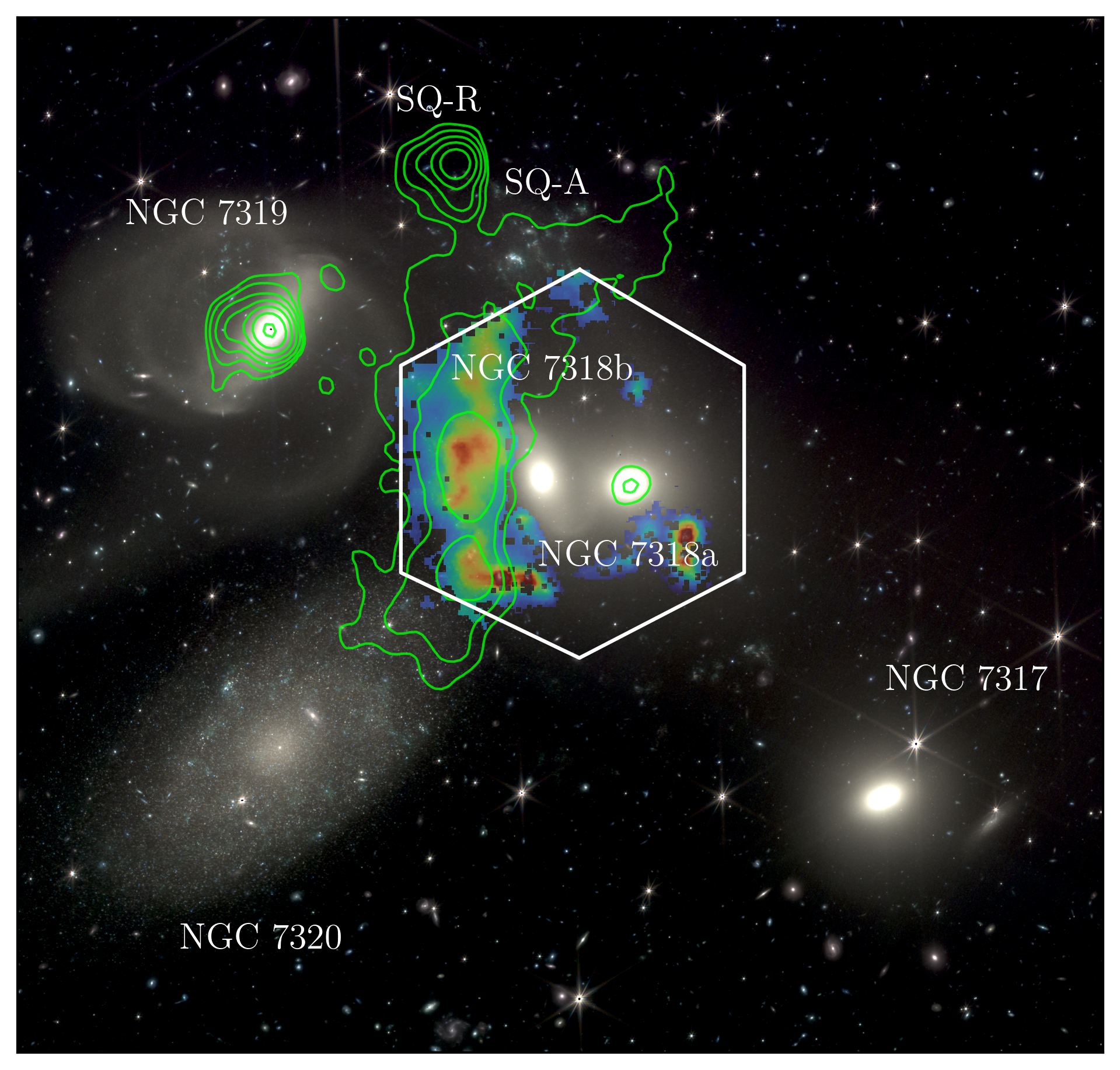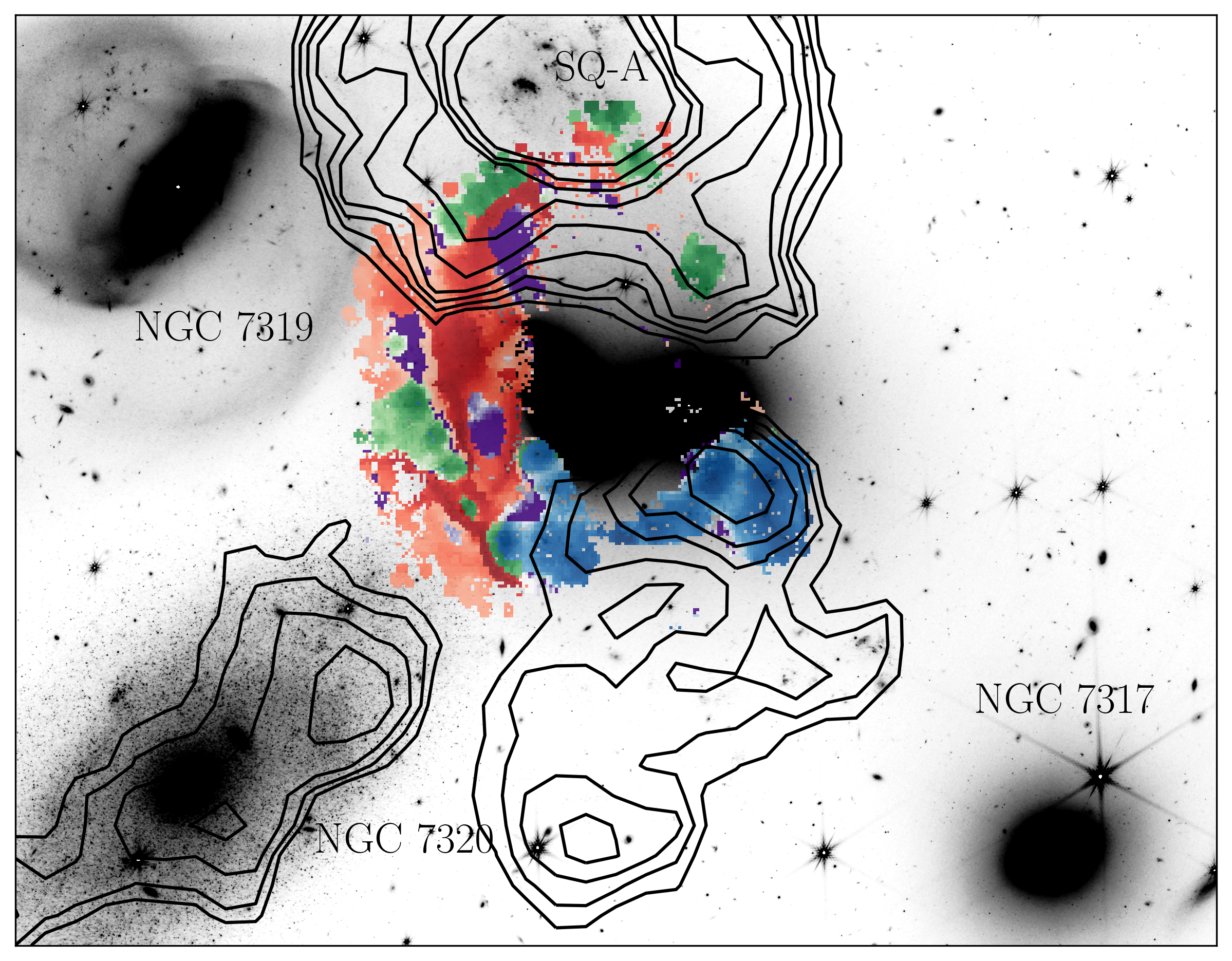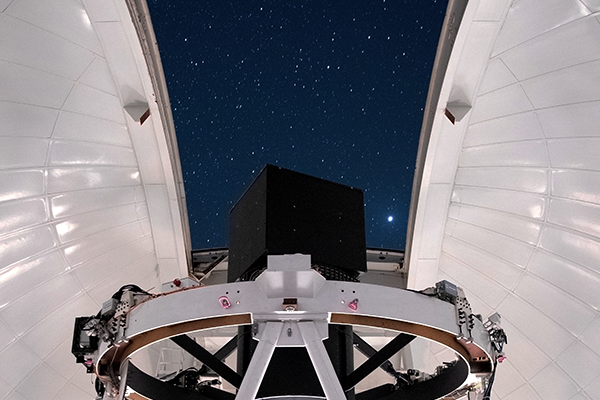Using the set of first-light observations from the new William Herschel Telescope Enhanced Area Velocity Explorer (WEAVE) wide-field spectrograph, a team of more than 50 astronomers, led by Dr Marina Arnaudova at the University of Hertfordshire, has presented the first WEAVE scientific results on Stephan’s Quintet.
This state-of-the-art wide-field spectrograph is a 20-million Euro project that brings together leading experts from around the world. WEAVE is set to revolutionise our understanding of the Universe, offering unprecedented detail, as demonstrated in this new study of Stephan’s Quintet.
Stephan's Quintet, also known as the Hickson Compact Group 92, is a nearby galaxy group that consists of five galaxies (NGC 7317, NGC 7318a, NGC 7318b, NGC 7319 and NGC 7320c). Ever since its discovery in 1877, it has captivated astronomers, particularly because it represents a galactic crossroad where past collisions between galaxies have left behind a complex field of debris.
“Dynamical activity in this galaxy group has now been reawakened by NGC 7318b, a galaxy smashing through it at an incredible speed of over 2 million miles per hour (3.2 million kilometres per hour), leading to an immensely powerful shock, much like a sonic boom from a jet fighter”, says Dr Arnaudova. This system thus presents an ideal laboratory to understand the chaotic and often violent relationship between galaxies, and as such was the focus of the first-light observations by the WEAVE Large Integral Field Unit (LIFU).

Published in the Monthly Notices of the Royal Astronomical Society (MNRAS), Dr Arnaudova and her team provide a new insight into the large-scale shock front. By combining data from WEAVE's LIFU with other cutting-edge instruments such as the Low Frequency Array (LOFAR), the Very Large Array (VLA), and the James Webb Space Telescope (JWST), they have found a previously undiscovered dual nature of the shock.
As the shock moves through pockets of cold gas, it travels at hypersonic speeds—several times the speed of sound—powerful enough to rip apart electrons from atoms, leaving behind a glowing trail of charged gas, as seen with WEAVE. However, when the shock passes through the surrounding hot gas, it becomes much weaker. Instead of causing significant disruption, the weak shock compresses the hot gas, resulting in radio waves that are picked up by radio telescopes like LOFAR.

The WEAVE, a new generation spectrograph
The WEAVE spectrograph uses optical fibres to collect light from celestial objects and transmits it to a spectrograph that separates the light according to its different wavelengths. It can work at two different spectral resolutions, which are used to measure the speeds of objects in the line of sight (using the Doppler effect) and to determine their chemical composition. The versatility of WEAVE is one of its main strengths. While the LIFU mode contains hundreds of fibres in a compact distribution, essential for imaging extended areas of the sky, in the MOS mode about a thousand individual fibres can be placed (by two robots) to simultaneously collect light from stars, galaxies or quasars. During the first five years of operation, spectra of millions of individual stars and galaxies are expected, a goal that can be achieved thanks to the WEAVE spectrograph's ability to observe so many bodies at once.
The Catalan contribution to the WEAVE spectrograph
This project involves scientists from the Institute of Cosmos Sciences of the University of Barcelona (ICCUB) and the Technical University of Catalonia (UPC). The Institute for Space Studies of Catalonia (IEEC) is taking part with researchers from the ICCUB and UPC units. The Catalan institutions have worked, from the beginning of the project, on the definition of the scientific objectives and the selection of the objects to be observed —from stars in various evolutionary phases to star clusters— as well as in the sampling of quasars, extremely bright and very distant active nuclei galaxies. Specifically, one ICCUB-IEEC member, Mercè Romero-Gómez, and one from the UPC, Roberto Raddi, are members of the international working groups on young stars, galactic archaeology and white dwarfs that make up the team of scientists responsible for planning the observations. Teresa Antoja (ICCUB) and Ignasi Pérez-Ràfols (UPC) co-lead the research teams responsible for galactic disc dynamics and quasars, respectively.
Mercè Romero-Gómez, from the Institute of Cosmos Sciences (ICCUB-IEEC), says: "After years of preparation, we have been able to obtain the first spectra with the Large Integral Field Unit of WEAVE from the Stephan’s quintet group of galaxies. The quality of the spectra has allowed to reassess the dynamical processes happening in this well-known set of galaxies”. In the following year, data coming from the Multi-Object Spectrograph will allow to assess the dynamics of our own Galaxy, together with the astrometric and spectroscopic data from Gaia (ESA).
Roberto Raddi and Ignasi Pérez-Ràfols, commenting on the contribution of the Polytechnic University of Catalonia, say: "Our teams will contribute to the study of some 100,000 white dwarfs previously identified by Gaia, and discover the secrets behind the last evolutionary phases of Sun-like stars, and with the identification of 450,000 quasars, the most distant and bright active galactic nuclei in the universe".
Research paper
M. I. Arnaudova et al., 2024, "WEAVE First Light observations: Origin and Dynamics of the Shock Front in Stephan's Quintet", MNRAS.
More information
"Inauguration of WEAVE", ING Press Release, 31 October 2023.
"WEAVE First Light", ING Press Release, 12 December 2022.
"WEAVE spectrograph begins study of galaxy formation and evolution", ICCUB Press Release, 12 December 2022.
Jin S., et al., 2024, "The wide-field, multiplexed, spectroscopic facility WEAVE: Survey design, overview, and simulated implementation", MNRAS, 530, 2688. Paper.



